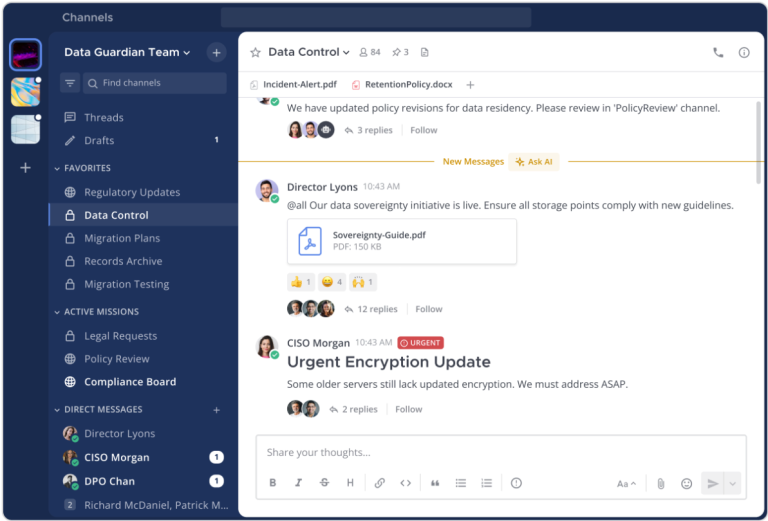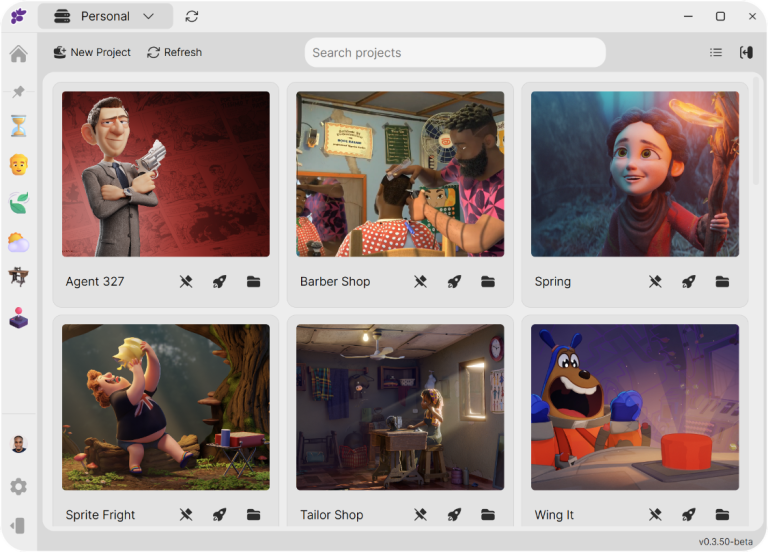Producing animation is like conducting an orchestra—every department needs to be in sync. The success of the project hinges not just on artistic talent, but on how well the team communicates and manages work. Let’s walk through the essential systems that keep animation production running smoothly, drawing from our experience at the studio.
In this post, we’ll explore the three pillars that support our animation pipeline:
- Communication – Keeping everyone up to date.
- Asset Management – File sharing and version control.
- Production Tracking – Visibility on task progress, managing reviews and approvals etc.
By the end, you’ll understand how these systems work together to create a cohesive pipeline—and how we’ve implemented them at Eaxum to keep our projects on track.
📪Communication
In a typical 3D production, you’ll have artists working on modeling, texturing, rigging, animation, lighting, and rendering—often simultaneously. Without clear communication, chaos ensues. Things become more complicated if the artists are working async/remotely across different time zones. Most studios establish a few key channels:
Daily standups or check-ins keep everyone aligned on priorities and blockers. These don’t need to be formal meetings—many teams use chat platforms where artists can post quick updates about what they’re working on and what they need.
Department leads act as bridges between the art team and production. A modeling supervisor, for instance, translates production schedules into actionable tasks for their team while communicating progress and challenges back to producers.
Centralized documentation is crucial. Whether it’s a shared workspace, wiki, or documentation platform, having a single source of truth for style guides, technical specifications, naming conventions, and pipeline procedures prevents the dreaded “I didn’t know we were supposed to do it that way” scenario.
Communication Tool Options
When choosing a communication platform for your studio, several options stand out:
- Discord – Popular with smaller studios and remote teams, offering voice channels and easy screen sharing
- Slack – Industry standard with extensive integrations and organized channels
- Mattermost – Open-source alternative offering self-hosted options and strong privacy controls
- Rocket.Chat – Another open-source solution with customizable features
🗃️Asset management
3D files are large, dependencies are complex, and artists need to access each other’s work constantly. A rigorous file management and version control system isn’t optional—it’s critical.
File Sharing and Version Control Options
The market offers several solutions for managing 3D assets and versions:
- Perforce – Industry heavyweight used by major studios, handles large binary files well
- SVN (Subversion) – Centralized version control system with straightforward workflows, good for binary files
- Git LFS – Git with Large File Storage extensions, familiar to developers.
- Clustta – Version control and collaboration platform designed for creative workflows.
- Custom pipeline tools – Many studios build proprietary systems tailored to their workflow.
An organized Folder structure and Naming conventions prevent confusion. Files should include the asset name, version number, and artist initials: char_hero_model_v003_jd.ma It seems tedious until you’re searching through dozens of unnamed “final_FINAL_final2.blend” files at 2 AM. Read more about how we structure our Projects here.
🎯Production Tracking
Producers and department leads need visibility into what’s done, what’s in progress, and what’s blocked. Production tracking systems provide this overview.
Production Tracking Options
Several platforms cater specifically to animation and VFX production tracking:
- Shotgun/Flow Production Tracking – Comprehensive industry solution with deep software integration
- Ftrack – Robust tracking with excellent review tools and customizable workflows
- Kitsu – Open-source production tracker built specifically for animation studios
- SyncSketch – Focused on review and feedback with production tracking features
Task management in Kitsu breaks projects into discrete tasks. A shot might have tasks for layout, animation, effects, lighting, and compositing. Each task moves through statuses: Not Started → In Progress → Review → Approved → Final. The visual boards give everyone—from artists to producers—instant understanding of where things stand.
Review and approval workflows are seamless. An animator submits their work directly through Kitsu, it gets reviewed by the animation supervisor with frame-accurate notes, and the task either gets approved or kicked back for revisions. Everything is documented, so there’s no confusion about what was requested or when.
Metrics and reporting help producers make informed decisions. How many shots are completed this week? Which department is bottlenecked? Are we on schedule for the delivery date? Kitsu’s dashboards answer these questions at a glance, and we can generate reports for clients or internal reviews with just a few clicks.
Making It All Work Together at Eaxum
When an artist completes a task and uploads their work to Clustta, they update the status in Kitsu, which triggers a notification in our relevant Mattermost channel. Supervisors can review the work, leave feedback in Kitsu, and discuss any issues in Mattermost—all without switching contexts or losing information.
But remember: tools are only as good as the discipline behind them. The fanciest software in the world won’t help if artists don’t follow naming conventions, skip version numbers, or forget to update task statuses. The best pipelines combine smart tools with clear expectations and a culture where everyone understands that good organization benefits everyone.
Our approach at Eaxum has evolved over multiple projects. We started simple and added sophistication as our needs grew. The goal isn’t to have the most elaborate pipeline—it’s to have one that the team actually uses and that keeps the work flowing smoothly from concept to final render. The combination of Mattermost, Clustta, and Kitsu gives us exactly that: a reliable, transparent, and efficient production pipeline that lets our artists focus on creating great work.





